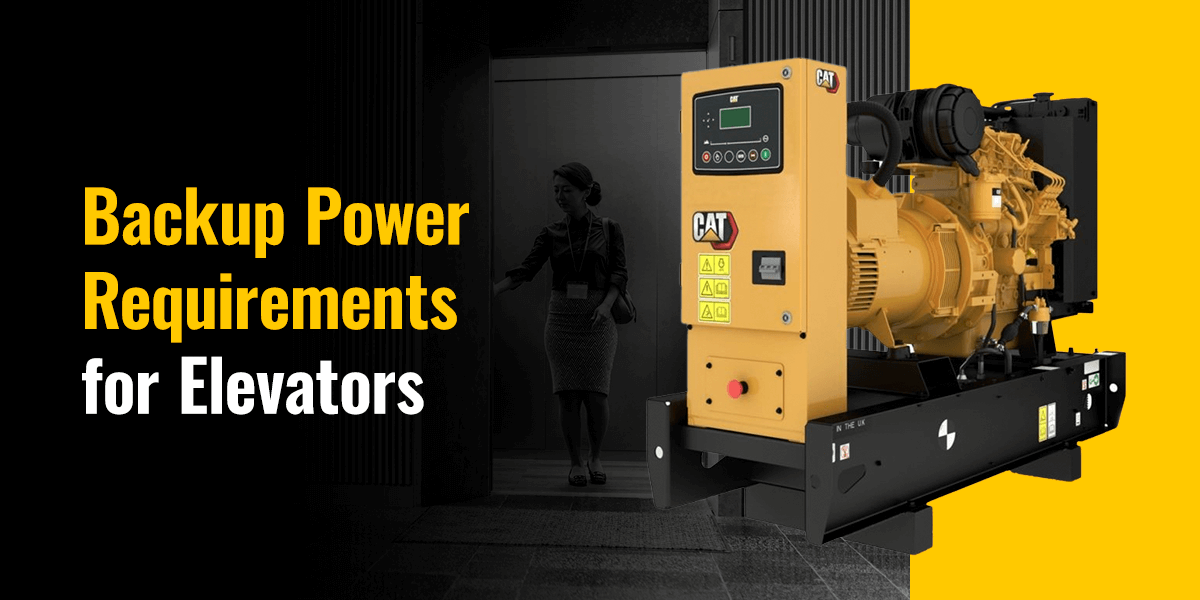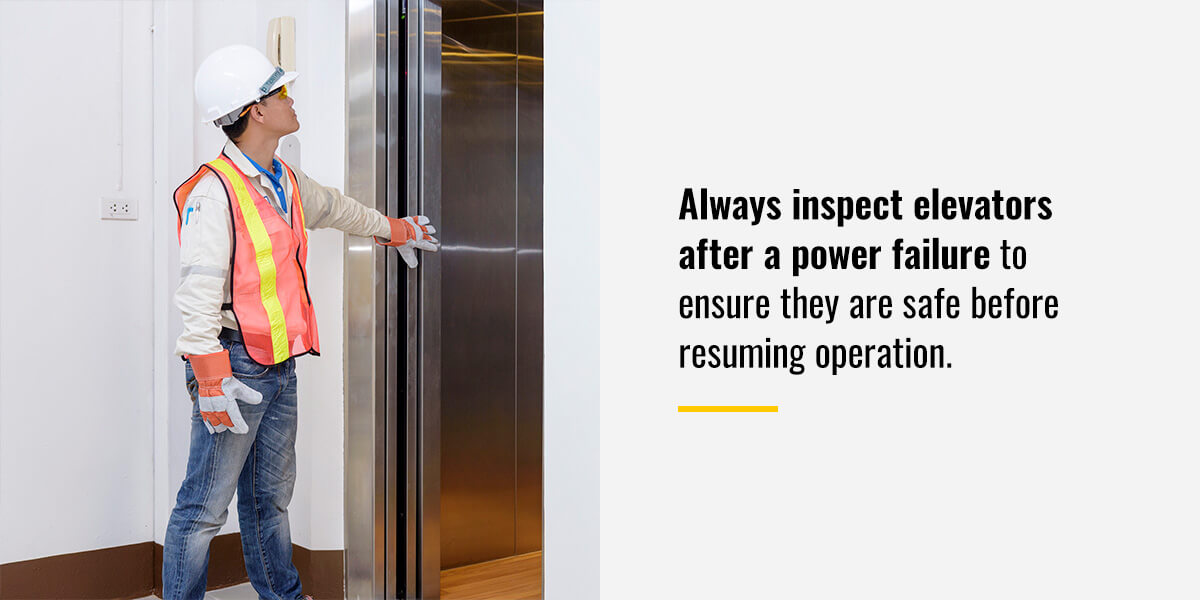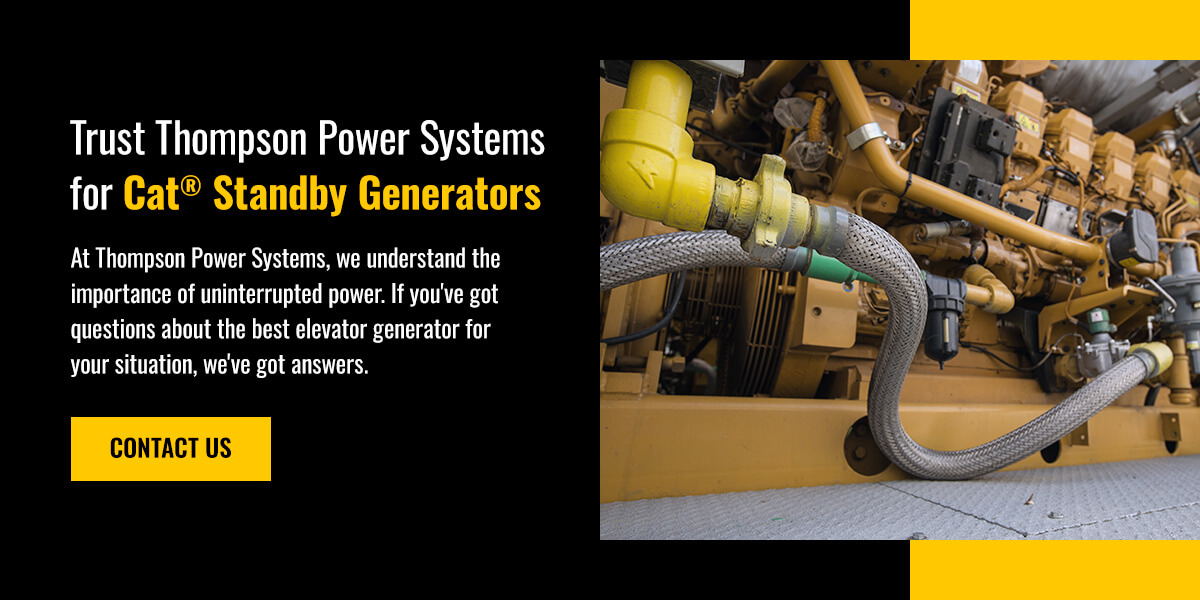

Electrical power is crucial for sustaining operations. They serve industries like health care, hospitality, food service, and manufacturing. Many establishments require a backup generator to keep things moving even when the power goes out. Buildings with elevators have even more stringent regulations protecting the occupants’ health and safety in case of power failures.
The International Building Code (IBC), in use across the U.S., states that elevators are required to be on a building’s emergency power. The IBC outlines the following elevator emergency power requirements:
An elevator’s weight and capacity vary depending on its application. Passenger elevators are typically smaller and lighter than freight or automobile elevators. As a result, the power requirements for each different elevator type also vary. Heavier applications usually need more power than passenger elevators in homes and businesses.
Most commercial buildings currently use two main types of elevators:
When you’re determining the right standby power supply for your building, you have two options:
A generator is usually the best option for buildings that require lots of power because it will keep the power on for longer. The two most common sources of mechanical energy for generators include:
Your generator will likely power more than just one elevator when the power goes out, so choose a fuel source that makes the most sense for your building and application. Consulting with a sales representative can help you find the best generator model for your establishment.

Understanding elevator operation during power failures can help inform evacuation procedures. Some elevators have a battery lowering system — also known as an automatic rescue device — that activates once normal power disconnects. This feature safely lowers the elevator to a nearby level and opens the doors to allow passengers to exit. However, the elevator needs more power to begin running again.
When you have a backup generator, you’ll have a limited power supply in your elevators. Although regulations on power breakdown vary depending on location, the generator should activate within 60 seconds to provide power to at least one of the elevators in the building. The number of operable elevators will depend on the type of elevator and your generator’s capacity.
When power resumes, the elevator should return to operating as usual. However, power surges can sometimes damage an elevator. Always inspect elevators after a power failure to ensure they are safe before resuming operation.
A backup generator is crucial for keeping critical systems functioning in any building. For example, a power outage in a hospital could result in disastrous consequences when life-saving machines lose power. In a high-rise apartment building, losing power could trap residents on the top floors during natural disasters like tornadoes or earthquakes when it’s essential to be at or below ground level.
Installing a backup generator can prevent emergencies from turning into catastrophes. From supplying elevators with enough power to get people out of the building to keeping food fresh in a restaurant, a standby generator can save money, resources, and lives.
When you need power, you can rely on Caterpillar to equip your building with a sturdy, reliable elevator generator that’s built to last. Cat® standby generators come in a range of sizes and configurations. Whether you need an industrial diesel generator to power several elevators at once or a small, portable generator to power a home elevator system, you’ll be able to find one that fits your application.
Cat generator systems are known for their quick response times and dependable operations. Read some of our testimonials to see why Cat is the best choice for standby power supplies.

At Thompson Power Systems, we understand the importance of uninterrupted power. If you’ve got questions about the best elevator generator for your situation, we’ve got answers. Contact us online to set up a consultation on the exact generator you need for your specific applications and power requirements or click here to find your nearest location. We’re here to help you.